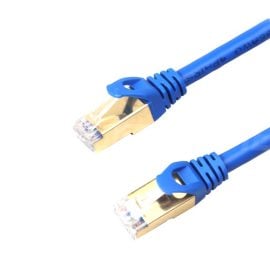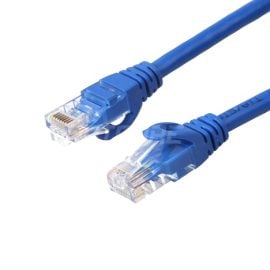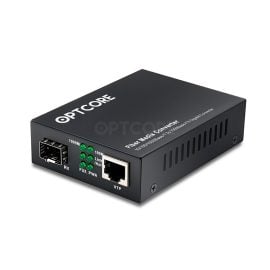Blog
Internet vs WiFi: What Are the Key Differences?
For many people, the terms “Internet” and “WiFi” are synonymous and are used to describe the accessibility of networks. But in fact, these two terms mean different things. Their relationship is similar to that between a target trip and a distance program. So, what is the difference between Internet vs. WiFi?
What is the Internet?

The Internet is a global communications network of computers, servers, and other devices.
Due to its sheer size and complexity, the Internet is considered difficult to regulate and control fully. In fact, despite its immense size and the millions of machines it contains, the Internet is controlled by strict network rules that direct how the devices operate and ensure that they function efficiently.
Today, the Internet has revolutionized how people communicate, entertain themselves, pay for things, access information, and more. The Internet connects people all over the world and allows resources to be shared. Without the Internet, living an everyday life would not be easy.
How does the Internet work?
When you access the Internet through a wired connection such as Ethernet or a wireless connection such as WiFi, your device connects through an Internet Service Provider (ISP) and begins sending and receiving data.
The data you send is first broken down into smaller packets sent through routers and switches. The packets are transmitted over various physical media, including fiber-optic cables, copper wires, and wireless connections. The packets are examined at each router, and then the router decides where to forward them next based on the destination address.
Once the packets reach their destination, they are reassembled like puzzle pieces to form the original message. Finally, the reconstructed data is delivered to the end user.
-
 Cat7 Snagless Shielded (SFTP) Ethernet Network Patch Cable, PVC, BluePrice range: US$ 2.20 through US$ 25.80 (Excl. VAT)
Cat7 Snagless Shielded (SFTP) Ethernet Network Patch Cable, PVC, BluePrice range: US$ 2.20 through US$ 25.80 (Excl. VAT) -
 Cat6 Ethernet Network Patch Cable, Snagless Unshielded (UTP), PVC, BluePrice range: US$ 0.85 through US$ 13.10 (Excl. VAT)
Cat6 Ethernet Network Patch Cable, Snagless Unshielded (UTP), PVC, BluePrice range: US$ 0.85 through US$ 13.10 (Excl. VAT) -
 1G/2.5G/5G/10GBASE-T RJ45 Copper Ethernet to 10G SFP+ Fiber Media ConverterPrice range: US$ 89.00 through US$ 208.00 (Excl. VAT)
1G/2.5G/5G/10GBASE-T RJ45 Copper Ethernet to 10G SFP+ Fiber Media ConverterPrice range: US$ 89.00 through US$ 208.00 (Excl. VAT) -
Product on sale
 10/100/1000Base-T RJ45 to 1000Base-FX SFP Gigabit Fiber Media ConverterOriginal price was: US$ 13.00.US$ 11.00Current price is: US$ 11.00. (Excl. VAT)
10/100/1000Base-T RJ45 to 1000Base-FX SFP Gigabit Fiber Media ConverterOriginal price was: US$ 13.00.US$ 11.00Current price is: US$ 11.00. (Excl. VAT)
What is Wi-Fi?

WiFi (or Wi-Fi) is a wireless communication technology. It allows a device (such as your cell phone) to connect wirelessly to your home router to connect to the Internet without needing physical cables. If you have a wired connection, you don’t need WiFi, but while wired is inactive, WiFi is not bound by location.
WiFi relies on radio waves to transmit data between devices, acting as an invisible cable that connects your device to your router. WiFi networks are commonly found in homes, offices, and most public places, providing convenient and flexible Internet access for residents or visitors.
By connecting to a WiFi network, devices can access online services, browse the web, and interact with other connected devices in the network coverage area.
How does WiFi work?
A WiFi connection uses radio waves to transmit information across a local or global network. To access WiFi, your device needs a wireless connection adapter that converts data into a radio signal.
The radio signal is then sent to a wireless router, which decodes the message and passes it on to the Internet over a wired Ethernet connection. The reverse is true for data received from the Internet.
Internet vs. WiFi
Imagine comparing web traffic to traveling from point A to point B in the physical world. The Internet is the world, the location of all the destinations we can choose from. WiFi is our transportation from the original location to the final destination. The specific differences between WiFi and the Internet are shown in the table below:
| Internet | WiFi | |
| Conception | The Internet is a global network of interconnected computers that allows devices to communicate with each other and access information and resources from all over the world. | Wi-Fi is a wireless networking technology that allows devices to connect to a local area network (LAN) or the Internet over a wireless network connection. |
| Advent date | 1960 | 1997 |
| Speed | signal strength | Depends on ISP, Internet type |
| Reliability | Based on signal strength | Connection-based. Fiber optics and cables are the most reliable. |
| Connection range | Global connectivity | Local connection, limited range |
| Access | Wired and wireless | wireless |
| Equipment Requirements | Any device with an Internet connection can access the Internet | Built-in Wi-Fi capability |
| Security | The Internet also has its own risks, such as phishing scams, malware, and other online threats. | Wi-Fi networks can be vulnerable to hacking and other cyber threats, especially if they are not correctly protected with strong passwords and encryption. |
| Network distance | The Internet can be accessed for several kilometers or even tens of kilometers. | Wi-Fi networks run by a single router operate over no more than 50-100 meters. |
Conclusion
We hope that this guide has been helpful and that it has helped you understand the difference between the Internet and WiFi. Even though they are not the same thing, they are interrelated, and WiFi provides a way to access Ethernet.
I believe that in the future, both Ethernet and WiFi will continue to evolve surprisingly. If you have any questions, feel free to ask in the comments.
FAQ
Q. Can you use WiFi without the Internet?
A. Technically, yes. Since Wi-Fi is, in the simplest terms, a way for your device to connect wirelessly to your home network, there is no need for an Internet connection to your local Wi-Fi network to share files or other resources (which is pretty much all you can do without an Internet connection).
Q. Do I need WiFi?
A. You can use the Internet without Wi-Fi, but you must use a wired connection, which can be inconvenient. Wi-Fi allows all your devices to connect to the Internet without a wired connection.
Q. Why do I have WiFi but no Internet connection?
A. Just because you have WiFi doesn’t mean you automatically have access to the Internet. You also need an Internet modem, a WiFi router, and an Internet plan to access it.
Q. Do I have Wi-Fi?
A. You can check each device to see if it is connected. Sometimes, the Wi-Fi signal icon is at the top of your phone or tablet screen or in the upper or lower corner for laptops or desktops. You can click on the icon to see if you are connected and to which network (if connected).
Q. Which is faster, the Internet vs. WiFi?
A. In a nutshell, Ethernet is usually faster than WiFi. WiFi offers convenience, while Ethernet provides a more stable and reliable connection. However, the speed you get with WiFi or Ethernet depends on several factors, such as the type of network, the distance between the device and the router, the number of devices connected, and so on.







